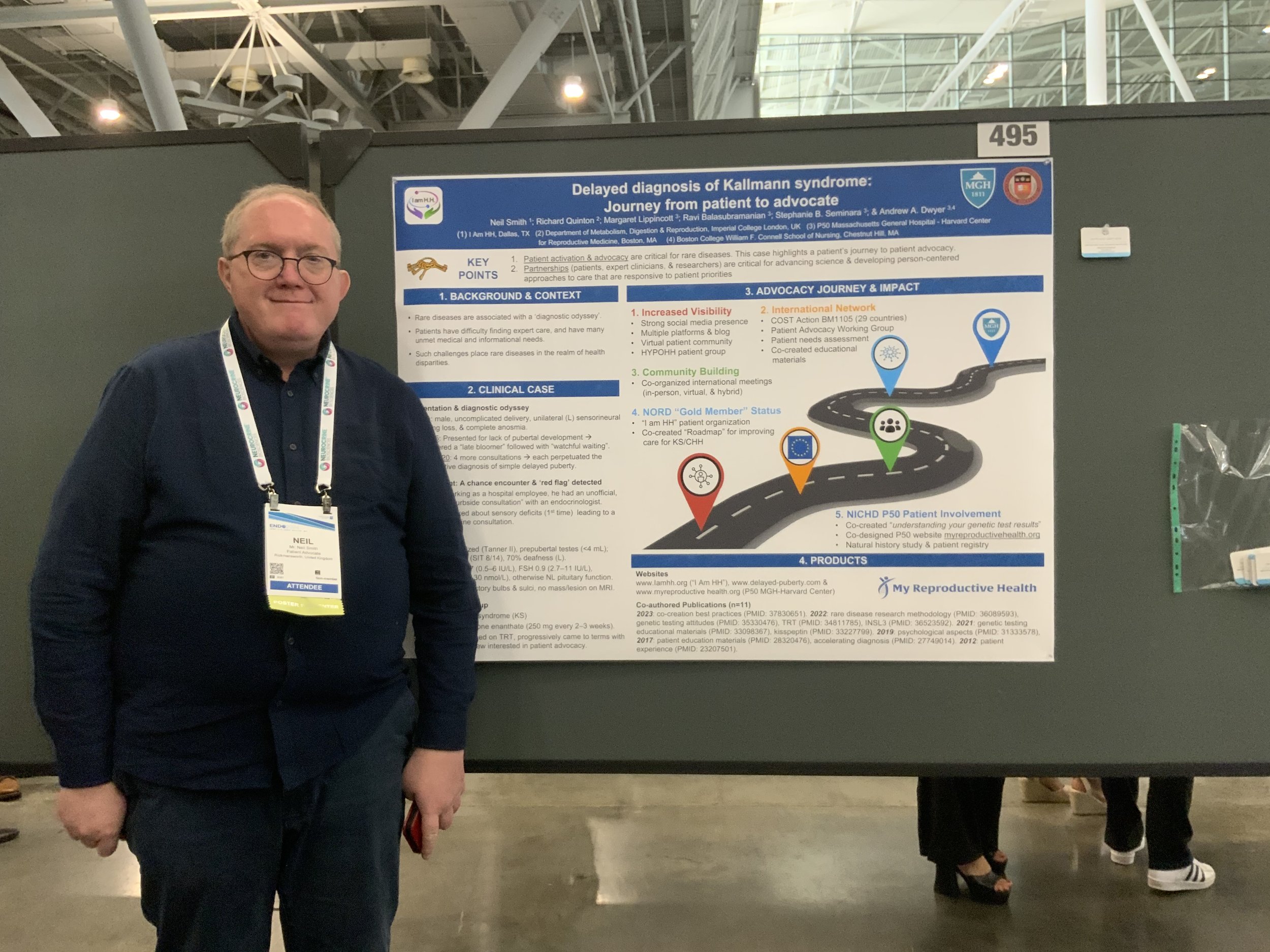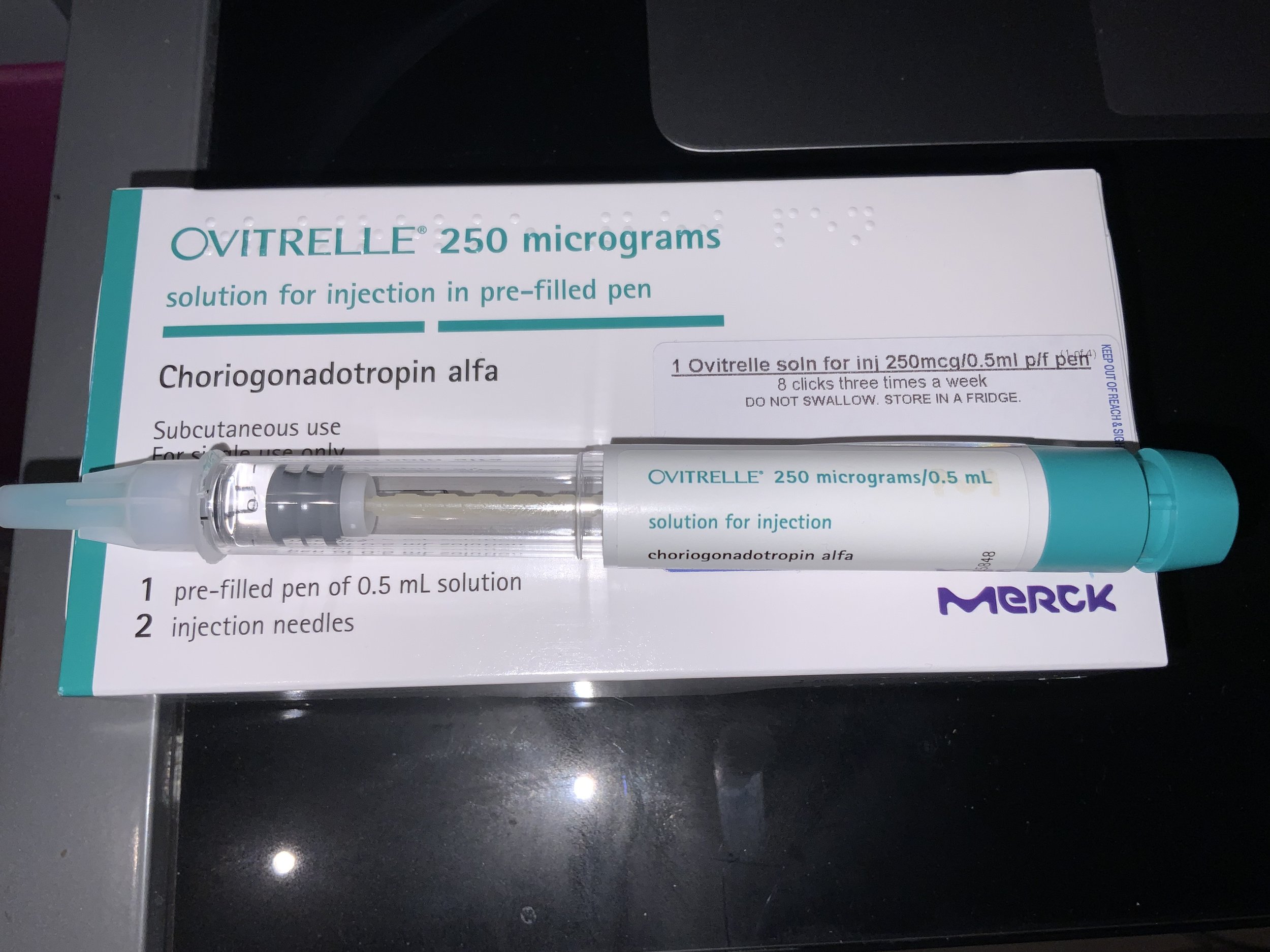When a “late bloomer” does not bloom
I did not start puberty on time and was labelled as a “late bloomer”.
By the age of 15, I still had not started puberty.
An examination by a school nurse resulted in a trip to the local doctor. He just said I was a “late bloomer” and I should just “wait and see”
No blood tests, no other physical examination.
At the age of 18 I saw two hospital consultants, a urologist and a general medicine consultant but the answer came back the same.
No doctor I spoke to picked up on the fact I also had poor hearing and no sense of smell.
I did not know it at the time but both these symptoms were linked to my lack of puberty.
I went to University to study biomedical sciences. I still had not started puberty.
I started work in the my first real job as a Biomedical Scientist at the Royal Free Hospital in London. A chance lunch time meeting with an endocrinologist (Dr Richard Quinton) working there changed everything.
After I first described my symptoms, he asked if I had a sense of smell. That one question led to my diagnosis of Kallmann syndrome.
I have been on testosterone therapy every since. I have to be on some form of hormone replacement. I still did not go through normal puberty but at least got most of the physical changes that should have happened. I would have to take a different form of treatment should I wish to be fertile.
Diagnosis of delayed puberty. - not always a case of “wait and see”.
Some points that were mentioned at the talks I went to at the conference on delayed puberty and Kallmann syndrome / CHH.
About 80% of males who have delayed puberty at the age of 14 will progress to normal puberty with no treatment or a short course of treatment.
30 - 55% of females who have delayed puberty at the age of 13 will progress to normal puberty.
Treatment is not normally required before the age of 13, however treatment need not be with held until a full diagnosis is obtained. Better outcomes both physically and emotionally can be obtained with earlier treatment.
Commencement of puberty (past Tanner stage 2) does not always mean puberty will complete fully in cases other than standard self limiting delayed puberty.
In females treatment with oestrogen only is suggested until maximum uterine growth is obtained (shown by 2 consecutive ultrasound scans). Progesterone should only be added later.
In males with Kallmann syndrome / CHH whose testicle volume is low (2 ml by ultrasound) should not be given hCG on its own when a teenager or young adult as this can reduce the chances of fertility treatment working later in life.
Treatment with testosterone only at any age has no effect (positive or negative) on future fertility chances.
Early use of gonadotropin therapy / fertility treatment in teenagers does not increase the chances of fertility chances working later in life but can reduce the time required to achieve sperm production.
The Kisspeptin challenge test could be a good diagnostic test to distinguish between self limiting delayed puberty and Kallmann syndrome / CHH. It is still only available as a research test but it is hoped that it will be available more widely at some stage.
Inhibin-B is a hormone that is released early in puberty and can be detected during childhood before the age puberty is due. While not always available in all hospital labs, measuring Inhibin-B levels could indicate puberty is starting years before any physical signs can be seen.
Ovitrelle injection.
Since Pregnyl is no longer available in a lot of places I have had to switch to a different form of hCG injection.
The Ovitrelle pen is designed for female use and at 6,500 IU it is normally too high a dose for single use for males. The dose can be adjusted via the dial “clicks” to get the required dose.
The dose will be set by a health care professional depending on the testosterone level response.
hCG = human chorionic gonadotropin.
hCG is a natural hormone that mimics the activity of luteinising hormone (LH) which normally makes the testicles produce natural testosterone. LH is one of the two pituitary derived hormones that is missing in Kallmann syndrome / CHH patients.
Types of treatment for Kallmann syndrome / CHH.
Treatment for Kallmann syndrome / CHH can fall into two different types:
Hormone replacement therapy (HRT)
or
Fertility treatment - known as gonadotropin therapy.
Over the years I have been on many forms of HRT and have undertaken fertility treatment as part of clinical trials
Some treatment methods will not be available in every country.
Some treatment methods may work better than others depending on the individual and it may take some discussion with the health care professional to find the method and dose that works best.
How is Kallmann syndrome / CHH diagnosed ?
There is no gold standard single test for Kallmann syndrome / congenital hypogonadotropic hypogonadism (CHH).
Diagnosis is often made by excluding other possible conditions that could affect puberty or fertility
Standard blood tests would include:
Testosterone or oestrogen / progesterone
LH
FSH
Prolactin
SHBG
Vitamin D
Other tests could include:
MRI to examine the size and structure of the pituitary gland and check to see if olfactory bulb is present.
Smell identication test.
Wrist x-ray to determine bone age.
DEXA / DXA bone density scan.
Hearing test.
Neurological exam to check reflexes.
Genetic testing may be undertaken whch can help in some cases, especially if there is a family history of the condition but not all cases of Kallmann syndrome / CHH can be identified through genetics.
What are the major symptoms of Kallmann syndrome ?
The defining symptom of Kallmann syndrome is a lack of sense of smell (anosmia) or a reduced sense of smell.
The condition can also occur with a normal sense of smell when the condition is called hypogonadotropic hypogonadism (HH).
There are other additional symptoms that may or may not occur. Kallmann syndrome or HH show a range of symptoms and patients may not experience any of them or only one them.
Possible additional symptoms:
Hearing loss
Cleft lip / palate
Fused fingers / toes
Missing teeth
Curvature of the back (scoliosis)
Mirror movements of the hands
Missing kidney





